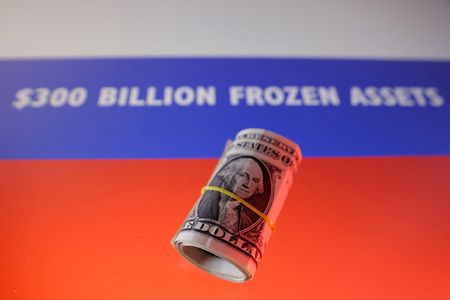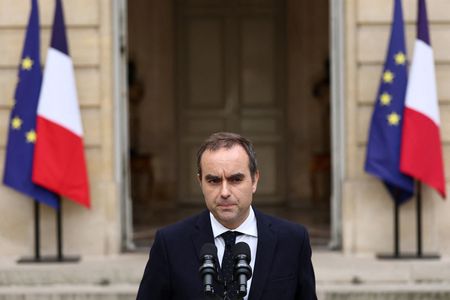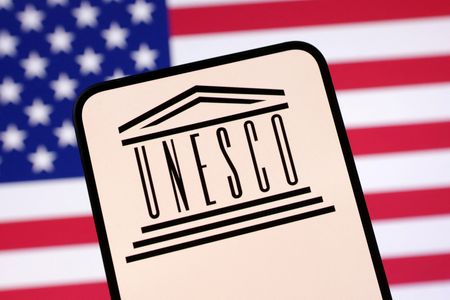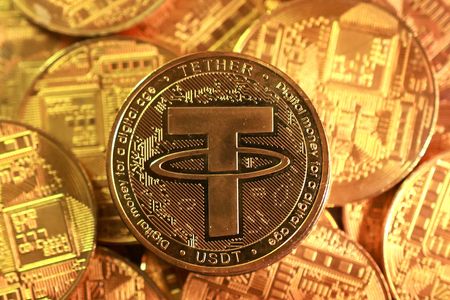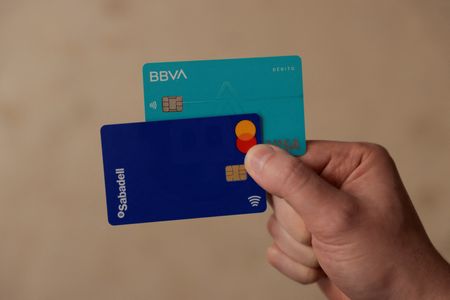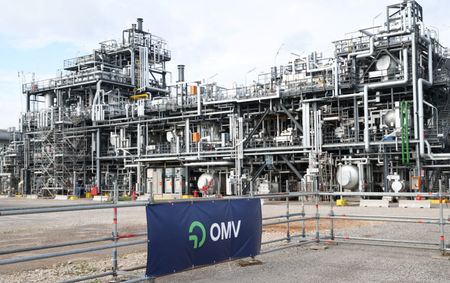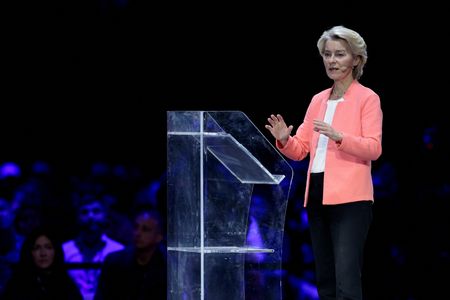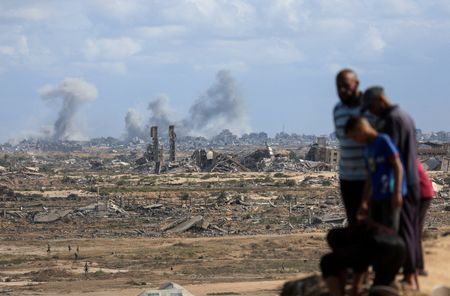By Jan Strupczewski
BRUSSELS (Reuters) -The European Union is searching for a way to finance Ukraine’s defence and reconstruction with Russian central bank assets immobilised in the West after Moscow’s invasion.
Under international law, sovereign assets cannot be confiscated.
The European Commission has put forward a plan it says would allow EU governments to use up to 185 billion euros ($216.76 billion) – most of the 210 billion euros worth of Russian sovereign assets currently frozen in Europe – without confiscating them – a red line for many capitals and for the European Central Bank.
While there is political support for the idea in principle, some countries want more clarity on the legal and fiscal risks – notably Belgium, which hosts the Euroclear central securities depository and has a GDP of roughly 600 billion euros.
HOW WOULD IT WORK?
At the outset of Russia’s war in Ukraine, Euroclear was holding bonds for the Russian central bank. As these bonds have matured, the resulting cash has become stuck in Euroclear because of EU sanctions against Moscow.
Euroclear now invests the cash in the European Central Bank. The idea is for Euroclear to instead invest in zero-coupon bonds issued by the European Commission with guarantees from EU governments.
The EU would then use the cash to issue a “Reparations Loan” to Ukraine. The loan would only be repaid by Ukraine once it receives war reparations from Russia in a peace agreement, effectively allowing Ukraine to spend the money now, rather than wait until Moscow pays up.
Initially the idea was to route the money through a Special Purpose Vehicle (SPV) owned by EU governments, but now the Commission thinks it would be simpler to just put the cash in a Commission account without creating an SPV.
HOW MUCH MONEY IS AVAILABLE?
Some $300 billion (256.59 billion euros) of Russian sovereign assets are frozen globally. This number does not include any frozen assets of Russian oligarchs.
Of this, 210 billion euros are held in Europe, of which 185 billion euros are held by Euroclear. About 176 billion euros of the Russian assets in Euroclear have by now turned into cash and the remaining nine billion worth of securities are set to mature in 2026 and 2027.
The EU will therefore have roughly 185 billion euros to work with if it builds the reparations loan on Euroclear-held assets alone. But because the EU might have to first repay the 45 billion-euro ($50 billion) G7 loan to Ukraine agreed last year, the effective amount for now is 140 billion euros.
The Commission has said it would wait for an International Monetary Fund assessment of Ukraine’s financing needs in 2026 and 2027 before deciding on the loan’s size.
Finland and Sweden estimate the size of Ukraine’s unmet financing needs during those two years at 130 billion euros.
HOW WOULD THIS BE DONE WITHOUT CONFISCATING THE CASH?
Russia would retain the claim on its 185 billion euros in Euroclear, and the Belgian securities depository would have the asset of the same amount of EU bonds to cover that liability.
The only difference from the current situation for Euroclear would be that it invests the Russian cash in triple-A Commission bonds, rather than triple-A ECB deposits.
WHO CARRIES THE FINANCIAL RISK?
European Commission President Ursula von der Leyen has said the risk would be shared collectively.
The operation would need to be 100% guaranteed by the bloc’s member states. The Commission’s preference would be to have all of the EU’s 27 member states and non-European G7 countries signing up as well, proportionate to the size of their economies.
But the Commission is aware that Moscow-friendly Hungary might not want to guarantee the reparations loan and is ready to move ahead with just 26 other EU governments, as given the economic size of Hungary its share in the guarantees would be small.
The risk to EU governments is very small because their guarantees would only be called upon if EU governments themselves decide to unfreeze the Russian assets before Russia pays war damages to Ukraine.
To further remove the risk of an accidental unfreezing of the Russian assets if there is no required unanimity every six months to roll over sanctions, the Commission said it has found a way to roll over the sanctions by qualified majority only.
This would remove the risk that Hungary could cause an unexpected release of the assets by voting against a rollover.
WHAT HAS RUSSIA SAID?
The Kremlin has described the proposal as an illegal seizure of Russian property and cautioned there would be retaliation for the theft of Russian assets.
($1 = 0.8511 euros)
(1 euro = $1.1692)
($1 = 0.8535 euros)
(Reporting by Jan Strupczewski; Editing by Philippa Fletcher, Mark Porter and Sharon Singleton)

